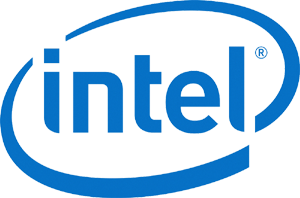8th ACM Conference on Information-Centric Networking (ICN 2021), Sept. 22–24, 2021
List of Accepted Posters & Demos
-
Content Confidentiality in Named Data Networking
Aleksandr Lenin and Peeter Laud (Cybernetica AS)
-
Abstract:
We present the design of name based access control scheme which facilitates data confidentiality by applying end-to-end encryption to data published on NDN with flexible fine-grained access control, which allows to define and enforce access policies on published data. The scheme is based on ciphertext-policy attribute-based encryption (CP-ABE). We discuss the use of the scheme and report the overhead associated with it, based on our implementation.
-
-
GitSync: Distributed Git Platform on NDN
Xinyu Ma and Lixia Zhang (UCLA)
-
Abstract:
Git is designed as a distributed version control system which has been widely used. However, most of the existing projects use a workflow where developers have to synchronize with a central server. This poster explores the possibility of a truly distributed git platform, dubbed GitSync, by making git run over Named-data Networking (NDN). GitSync runs a peer-to-peer protocol to get rid of central servers, therefore enabling higher availability when not all users are connected to cloud all the time. Therefore GitSync eliminates single point of failure and can continue operation over unstable connectivity and network partition.
-
-
ccnGen: A High-speed Generator of Bidirectional CCN Traffic Using A Programmable Switch
Junji Takemasa, Ryoma Yamada, Yuki Koizumi, and Toru Hasegawa (Osaka University)
-
Abstract:
This paper designs ccnGen, which generates request-response bidirectional CCN traffic, using a programmable switch. A prototype implementation demonstrates that the switch ASIC generates pairs of Interest and Content Object packets at 1.6 Tbps speed.
-
-
In-vehicle Networking with NDN
Christos Papadopoulos (University of Memphis), Susmit Shannigrahi (Tennessee Technological University), and Alex Afanasyev (Florida International University)
-
Abstract:
In-vehicle networks have been relying on primitive technologies that provide neither security nor high-throughput. As in-vehicle communication becomes more sophisticated, the automotive community is looking for better security and performance. In this work we argue for NDN as a solution for the future of the automotive community.
-
-
Mnemosyne: An Immutable Distributed Logging Framework over Named Data Networking
Siqi Liu, Philipp Moll, and Lixia Zhang (UCLA, Computer Science)
-
Abstract:
This poster describes the design and operations of Mnemosyne, a distributed logger running over Named Data Networking. Mnemosyne utilized proof of authenticity instead of proof of work. It assures immutability of logged events by interlocking all event records in a DAG mesh. By using a distributed design, Mnemosyne provides resilience while allowing for a high logging throughput.
-
-
Supporting Pub/Sub over NDN Sync
Varun Patil, Philipp Moll, and Lixia Zhang (UCLA, Computer Science)
-
Abstract:
Distributed dataset synchronization, or Sync, plays the role of a transport layer protocol in Named Data Networking (NDN). The role of Sync is to synchronize the namespace of all data productions by multiple entities running the same application. NDN application developers desire a high level API, such as the commonly used pub/sub API that hides the transport and network layer details. This poster explores the design of such an API built on top of the NDN Sync protocol State Vector Sync (SVS), along with a low-latency data fetching API. With these APIs, SVS provides fast and resilient dataset synchronization, enabling developers to work with familiar pub/sub API while benefiting from NDN’s capabilities of built-in data security, multicast data delivery, in-network caching, and consumer driven flow control.
-
-
DEMO: Decentralized ICN-based Dataflow System Implementation
Laura Al Wardani, T M Rayhan Gias, and Dirk Kutscher (University of Applied Sciences Emden/Leer)
-
Abstract:
This demo implements a distributed, data-oriented stream processing system. This system implements stream processing using Named Data Networking (NDN)-based communications. It exploits NDN-networking features to promote stream processing and serves in overcoming its limitations.
-
-
Tangle Centric Networking
Christopher Scherb (University of Basel), Dennis Grewe (Robert Bosch GmbH), and Christian Tschudin (University of Basel)
-
Abstract:
Today's Internet is heavily used for multimedia streaming from cloud backends, while the Internet of Things (IoT) reverses the traditional data flow, with high data volumes produced at the network edge. Information Centric Networking (ICN) advocates against a host-centric communication model which is promising for distributed edge computing environments and the execution of IoT applications in a decentralized fashion. However, the tight coupling challenges network performance due to additional synchronization overhead of large data volumes and services. We present Tangle Centric Networking (TCN) – a decentralized data structure for coordinated distributed applications and data exchange following principles of ICN. TCN can react on data and service changes and update them accordingly in network nodes, provide distributed data structures and enable cooperative work on the same data without huge overhead by using Tangles for coordination. We implemented TCN in simulations and evaluated the concept against a base line scenario.
-
-
Exploring Rate-based Congestion Control in NDN
Sichen Song and Lixia Zhang (University of California, Los Angeles)
-
Abstract:
We report our work-in-progress in designing a rate-based congestion control for NDN networks. We first explain why rate-based approach represents a more promising direction compared to the existing window-based congestion control solutions, and then provide a sketch of our initial design, together with a few lessons we have learned and some preliminary results in pursuing this new direction.
-










